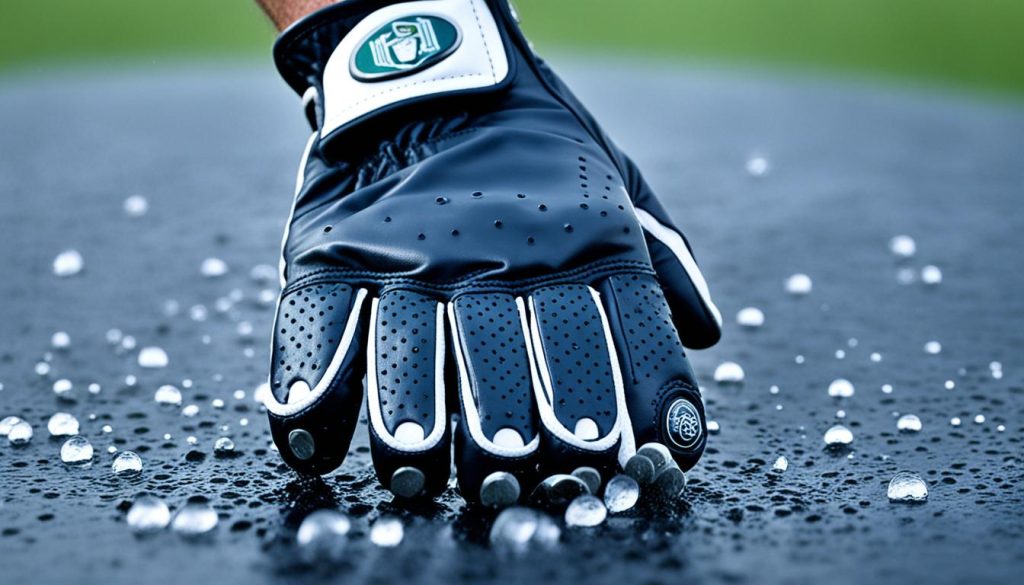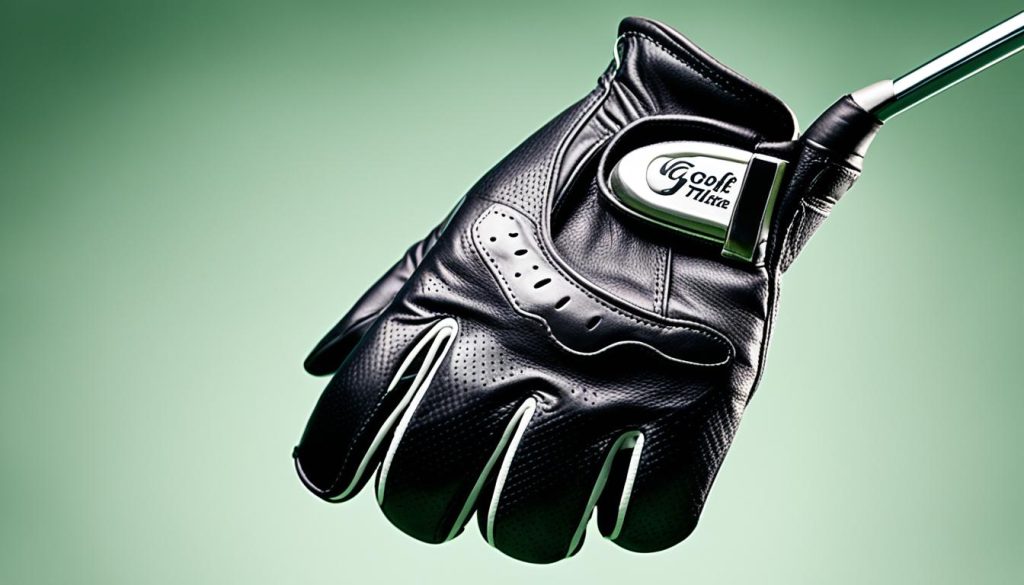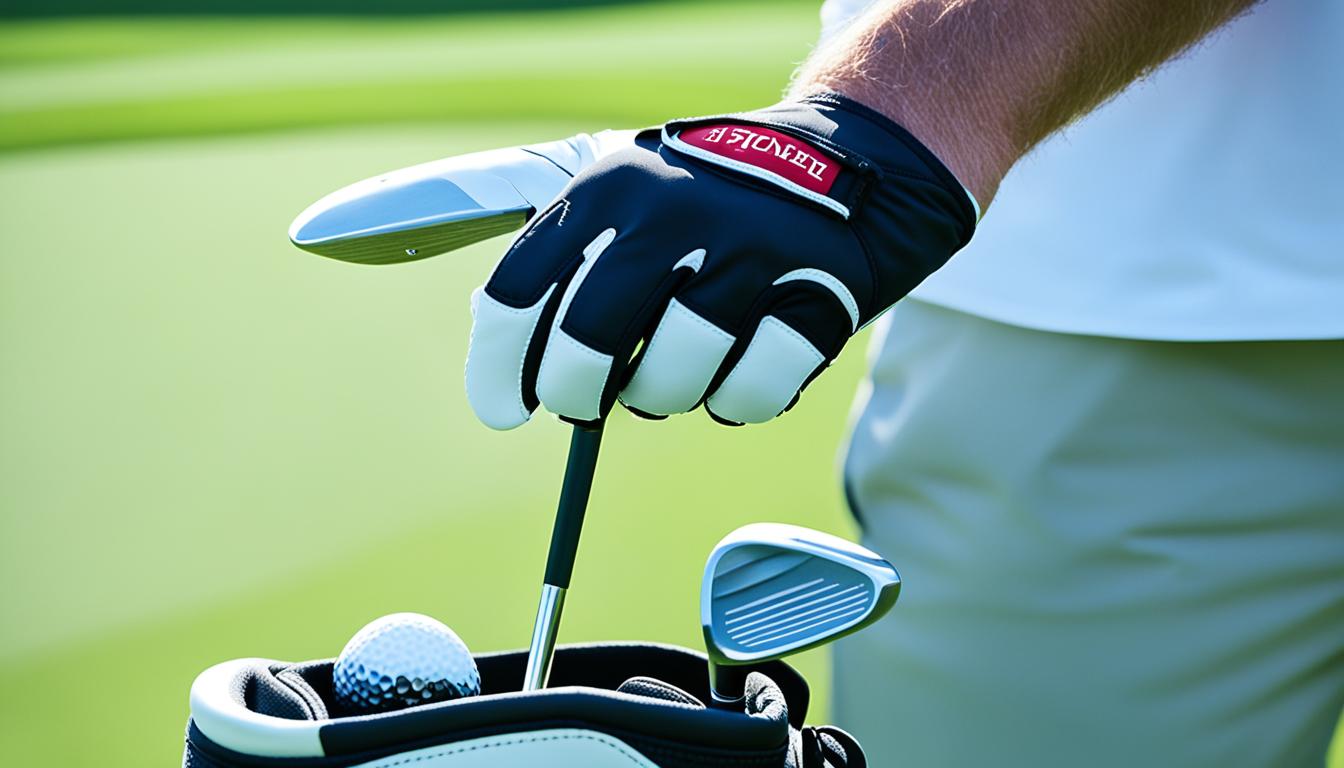Imagine the crisp morning air as you step onto the golf course, ready for a day of challenges and triumphs. You tighten your grip on the club, feeling the weight and balance in your hands. The first swing is smooth and powerful, setting the tone for the round. But then, as the game progresses, you notice a slight slip in your grip, affecting the accuracy and distance of your shots. It’s frustrating and disheartening. Could it be time to replace your golf glove?
Golf gloves are more than just accessories – they are a crucial part of your game. They provide the grip and control you need to achieve a consistent swing, ensuring that each shot is executed with precision. But like any piece of equipment, golf gloves have a lifespan. They can wear out over time, losing their gripping properties and becoming less effective.
So, how often should you replace your golf glove to maintain peak performance on the course? Let’s explore the optimal replacement intervals and the factors that influence the timing for renewal.
Key Takeaways:
- Regularly replacing your golf glove is essential for maintaining a strong grip and optimal performance.
- Factors such as wear, loss of grip, and visual signs of deterioration indicate when a glove needs replacement.
- Golf gloves should be changed every few rounds to ensure maximum effectiveness.
- Proper care and storage of gloves can help prolong their lifespan.
- Consider different types of gloves for various weather conditions and personal preferences.
The benefits of wearing a golf glove
When it comes to improving your golf game, a proper grip on the club is essential. That’s where a golf glove comes in. Wearing a golf glove provides several benefits that can enhance your performance on the course.
Improved grip and control
One of the main advantages of wearing a golf glove is the improved grip it offers. The tackiness of the glove material helps prevent the club grip from rotating during your swing, ensuring a more stable hold. This prevents slipping and allows for a more controlled swing, resulting in better ball contact and increased accuracy.
Reduced grip pressure
By wearing a golf glove, you can loosen your grip on the club without sacrificing control. With less grip pressure, your hands can relax, leading to a smoother and more natural swing. Maintaining a relaxed grip also helps prevent muscle tension and fatigue, allowing you to maintain consistency throughout your round.
Protection and comfort
A golf glove not only improves your grip but also protects your hand from friction and potential blisters. The glove creates a barrier between your skin and the club grip, reducing the risk of developing painful and distracting blisters. Additionally, the glove provides cushioning and helps absorb shock, increasing comfort during your swing.
Overall, wearing a golf glove contributes to a better grip, reduced grip pressure, and increased comfort and protection. These benefits ultimately result in a more consistent and effective swing, improving your overall performance on the course.
Factors influencing the lifespan of a golf glove

Several factors can significantly affect the lifespan of a golf glove. Understanding these factors can help you make informed decisions about when to replace your glove for optimal performance on the course.
Type of glove
The type of glove you choose can play a significant role in its durability. Leather gloves are popular for their soft and comfortable fit and perform well in ideal weather conditions. However, leather gloves tend to lose their quality features when exposed to wet weather or sweaty hands, making them less durable. On the other hand, all-weather gloves are designed to withstand various weather conditions and offer better durability in wet weather.
To maximize the lifespan of your glove, consider the specific conditions you often play in and choose the appropriate type of glove accordingly.
Weather conditions
Weather conditions, particularly playing in wet weather, can take a toll on the lifespan of your golf glove. Wet gloves should be replaced with a dry one to avoid deterioration. After a round in wet conditions, it’s crucial to properly dry your glove to prevent any damage. Moisture can cause the glove to lose its grip and lead to quicker wear and tear.
Furthermore, playing in hot weather conditions can cause excessive sweating, which can also contribute to the wear and tear of the glove. Sweaty hands, along with wearing and removing the glove during shots, can create additional friction and accelerate the deterioration of the glove.
Golfers’ tip:
Ensure you have a spare glove available in case the weather changes or your glove gets wet or sweaty during a round. This will allow you to continue playing without compromising your grip and comfort.
Golfers’ tip:
Consider using a specialized rain glove or an all-weather glove when playing in wet conditions. These gloves are designed to provide a better grip even when they are wet, allowing you to maintain control over your shots.
Signs that a golf glove needs to be replaced
When it comes to your golf glove, there are visible signs that indicate it’s time for a replacement. These signs include:
- Worn areas: Check for any worn areas, especially in the fingertips or palm of the glove. These worn areas can be a sign of wear and potential holes.
- Loss of grip: If you find that your glove is no longer providing the grip you need, it’s time for a replacement. A loss of grip can negatively impact your swing and overall performance.
- Shiny appearance: Over time, golf gloves can develop a shiny appearance. This shine is a result of the glove losing its gripping properties, which can affect your ability to hold the club firmly.
- Holes: Holes in your golf glove are a clear indication that it’s time for a new one. Holes not only affect the grip but can also cause discomfort during your swing.
- Hard and dirty: Leather gloves, in particular, can become hard and dirty with use. If your glove feels stiff or has accumulated dirt over time, consider replacing it.
- Damaged palm: Take a look at the palm of your glove. If you notice any signs of damage, such as tears or excessive wear, it’s time to retire that glove.
Recognizing these signs will help ensure that you have a glove that provides optimal performance on the course. When in doubt, it’s better to replace your glove sooner rather than later.
Signs that indicate a golf glove needs to be replaced
| Signs | Description |
|---|---|
| Worn areas | Visible wear and potential holes in the fingertips or palm |
| Loss of grip | Glove no longer provides the grip needed for a swing |
| Shiny appearance | Glove has become shiny and lost its gripping properties |
| Holes | Visible holes in the glove that affect grip and comfort |
| Hard and dirty | Leather gloves become hard and accumulate dirt with use |
| Damaged palm | Signs of tears or excessive wear in the palm of the glove |
Recommendations for replacing golf gloves

The frequency of replacing your golf gloves can vary based on individual preferences and playing habits. While it is ideal to change gloves every few rounds for optimal performance, there are factors that can influence your replacement frequency.
- Break-in period: Some golfers prefer to break in a new glove at home or during practice rounds before using it in a competitive round. This allows the glove to conform to your hand better and enhance comfort and grip.
- Multiple gloves: Professional golfers like Tiger Woods often carry multiple gloves and use a new one at the start of each round. However, for most golfers, this level of replacement frequency may not be practical or necessary.
- Finding the right fit: When replacing your golf glove, it is important to ensure it fits properly and feels comfortable. The right fit allows for better control and grip on the club.
- Glove care: Proper care and storage of your gloves can also help prolong their lifespan. Be sure to slip them off from the fingertips to avoid stretching and dry them thoroughly after each use. Storing them separately and protecting them from extreme temperatures or excessive moisture can also contribute to their longevity.
Remember that individual preferences and playing habits will ultimately determine your replacement frequency. Experiment with different intervals and assess how your glove performs over time. By considering these recommendations and taking proper care of your gloves, you can ensure they continue to provide the grip and comfort you need on the golf course.
Golf Glove Replacement Recommendations:
| Golf Glove Material | Ideal Replacement Frequency |
|---|---|
| Leather | Every few rounds |
| Synthetic (All-weather) | Every few rounds |
| Rain Glove | Replace when worn or for wet conditions |
| Thermal Glove | Replace when worn or for cold conditions |
Different types of golf gloves for various conditions
Golfers have a range of options when it comes to choosing the right golf glove for different conditions. Whether you’re playing in ideal weather conditions, in the rain, or during colder rounds, there are specific types of gloves designed to meet your needs and enhance your performance on the course.
1. Leather Gloves
Leather gloves offer a soft and comfortable fit, making them a popular choice among golfers. They provide excellent grip and control, especially in dry conditions. Leather gloves are known for their durability and ability to conform to your hand over time, ensuring a snug fit that enhances your swing. They are ideal for fair weather and provide a classic look that many golfers prefer.
2. All-weather Gloves
All-weather gloves are designed to withstand various weather conditions, making them versatile and durable. These gloves are made from synthetic materials that offer a strong grip even in wet or humid conditions. They are breathable and lightweight, making them suitable for long rounds of golf. All-weather gloves provide year-round performance, ensuring you have a reliable grip regardless of the weather conditions.
3. Thermal Gloves
Thermal gloves are specially designed to provide warmth and protection during colder rounds of golf. These gloves are made with insulated materials that trap heat, keeping your hands comfortably warm. Thermal gloves offer excellent grip and control, allowing you to maintain a consistent swing even in chilly temperatures. They are a must-have for golfers who play in colder climates.
4. Rain Gloves
Playing in wet conditions can be challenging, but rain gloves are specifically designed to provide a solid grip even when the club and your hands are wet. These gloves are made with water-resistant materials that ensure a firm grip on the club, preventing slippage and loss of control. Rain gloves are a game-changer when it comes to wet weather golf, allowing you to maintain your performance even in the rain.
Each type of golf glove has its own benefits and is suitable for specific situations on the course. Whether you prefer the classic feel of leather gloves, the versatility of all-weather gloves, the warmth of thermal gloves, or the grip of rain gloves, choosing the right glove based on the conditions you’ll be playing in enhances your golfing experience and performance.
| Glove Type | Benefits |
|---|---|
| Leather Gloves | Soft and comfortable fit, excellent grip in dry conditions, durability, classic look |
| All-weather Gloves | Versatile and durable, strong grip in various weather conditions, breathable and lightweight |
| Thermal Gloves | Warmth and protection during colder rounds, excellent grip and control in chilly temperatures |
| Rain Gloves | Solid grip in wet conditions, water-resistant materials, prevent slippage and loss of control |
Key considerations when purchasing a golf glove
When buying a golf glove, several key considerations can help you make the right choice. These factors can significantly impact your comfort, grip, durability, and overall performance on the golf course.
Fit
The fit of a golf glove is crucial for optimal performance. A well-fitting glove ensures comfort and allows for a secure grip on the club. It should feel snug but not too tight, with no excess fabric at the fingertips or palm. Trying on different sizes and styles can help you find the perfect fit.
Materials
The materials used in golf gloves can vary, with leather and synthetic options being the most common. Leather gloves offer a soft and premium feel, providing excellent grip and durability. Synthetic gloves, on the other hand, are often more affordable, lightweight, and durable. Consider your preferences in terms of feel, longevity, and cost when choosing the right material for your golf glove.
Breathability
Breathability is an essential feature to consider, especially if you tend to have sweaty hands. Look for gloves with moisture-wicking properties and ventilation technology to keep your hands dry and comfortable during hot rounds. Proper airflow can help prevent discomfort and ensure a better overall experience.
Grip
The grip of a golf glove is critical for maintaining control over the club during your swing. Look for gloves with textured palm materials or additional grip enhancements to improve traction and prevent slipping. A glove that offers a secure grip can enhance your swing and contribute to better ball striking.
Durability
Investing in a durable golf glove can save you money in the long run. Gloves that are resistant to wear and tear will last longer, allowing for extended use before replacement. Consider the material quality, reinforced stitching, and overall construction when evaluating the durability of a glove.
Brand Options
There are numerous golf glove brands available, each offering a range of features, styles, and price points. Research different brands, read reviews, and consider reputable options that have a track record of producing high-quality golf gloves. Exploring different brand options can help you find a glove that best suits your preferences and playing style.
By considering the fit, materials, breathability, grip, durability, and brand options, you can make an informed decision when purchasing a golf glove. Remember that finding the right glove for your needs can enhance your comfort, control, and enjoyment on the course.
Top golf glove recommendations for different needs
When it comes to finding the perfect golf glove, there are plenty of options to suit every golfer’s needs. Whether you’re looking for the best synthetic glove, the best leather glove, or the best premium glove, we’ve got you covered. Here are our top recommendations for golf gloves that excel in durability and breathability, ensuring you can perform at your best on the course.
Best Synthetic Glove: Titleist Players Flex Glove
The Titleist Players Flex Glove is a top choice for golfers seeking a high-quality synthetic glove. With its innovative design and exceptional fit, this glove offers excellent durability and flexibility. The premium Cabretta leather palm provides a superb grip, while the lightweight synthetic material offers breathability and comfort, making it an ideal choice for players who prioritize both performance and style.
Best Leather Glove: FootJoy StaSof Golf Glove
When it comes to leather gloves, the FootJoy StaSof Golf Glove stands out as a top performer. Crafted with premium Cabretta leather, this glove offers unmatched softness and feel. The breathable PowerNet mesh along the knuckles promotes airflow and enhances comfort. With its exceptional durability and grip, the FootJoy StaSof Golf Glove guarantees a superior performance on the course, making it a popular choice among golfers of all levels.
Best Premium Glove: Mizuno Tour Pro Golf Glove
For golfers who demand the utmost quality and performance, the Mizuno Tour Pro Golf Glove is a top-notch choice. This premium glove features a tour-quality leather palm that offers unparalleled feel and grip. The breathable mesh upper enhances airflow, keeping your hand cool and comfortable during those long rounds. With its exceptional craftsmanship and attention to detail, the Mizuno Tour Pro Golf Glove is the epitome of luxury and performance.
Best Glove for Durability: Callaway Weather Spann Glove
When durability is a top priority, the Callaway Weather Spann Glove comes out on top. Made with a blend of synthetic materials, this glove offers exceptional durability and resistance to wear and tear. The reinforced palm patch provides a secure grip, while the adjustable closure ensures a snug fit. Whether you’re battling rough weather or intense practice sessions, the Callaway Weather Spann Glove will outlast the competition.
Best Glove for Breathability: Under Armour Iso-Chill Golf Glove
For golfers who prioritize breathability and moisture control, the Under Armour Iso-Chill Golf Glove is the ultimate choice. The innovative Iso-Chill fabric disperses heat, keeping your hand cool and dry even on hot and humid days. The premium AA Cabretta leather palm provides a soft and comfortable grip, while the breathable mesh back enhances airflow. With its advanced cooling technology, the Under Armour Iso-Chill Golf Glove ensures maximum performance without compromising comfort.
When choosing your golf glove, it’s important to consider your individual needs and preferences. These top recommendations serve as a starting point, and top brands like Titleist, FootJoy, Mizuno, Callaway, and Under Armour offer a wide selection of gloves to suit every golfer’s playing style and conditions. Explore these options to find the perfect glove that not only enhances your grip and durability but also provides the breathability and comfort you need to perform at your best on the golf course.

